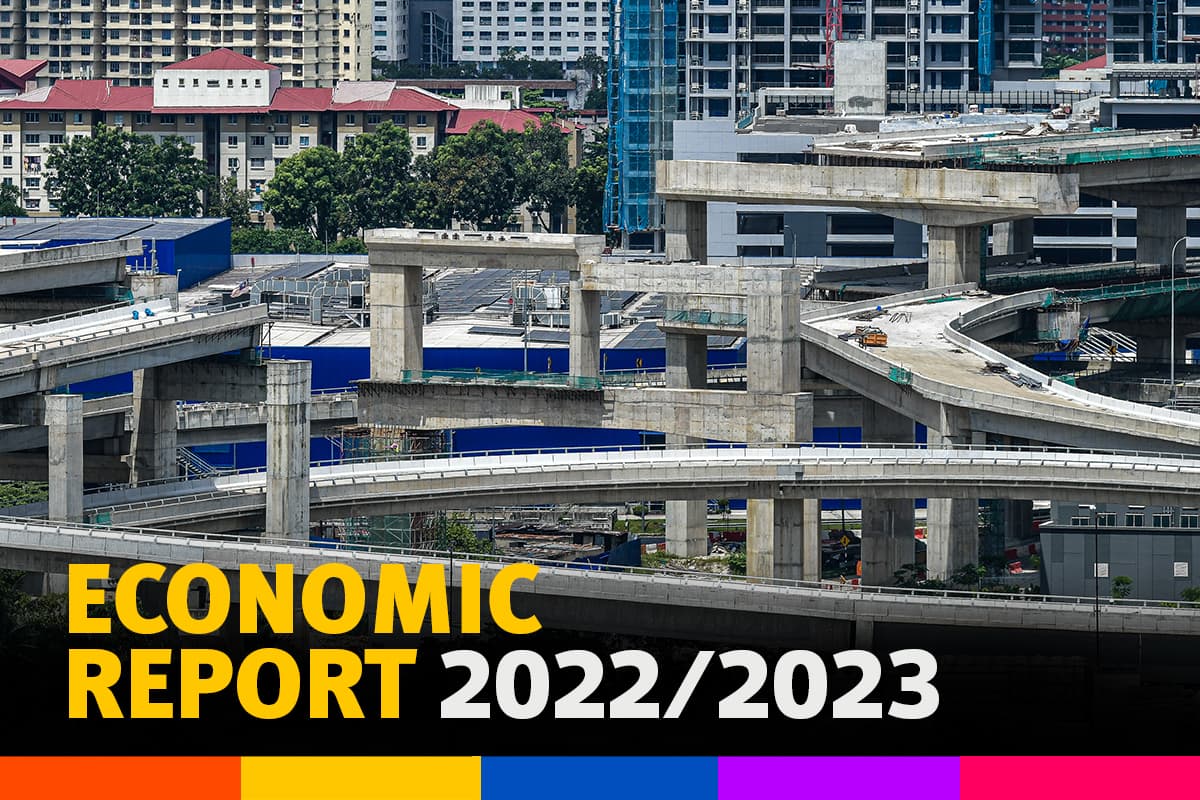
KUALA LUMPUR (Oct 7): The Malaysian government will still spend more than it earns in 2023 due partly to higher emolument for civil servants and debt service charges, expecting a budget deficit of RM99.07 billion, or 5.5% to gross development product (GDP).
It has budgeted to spend roughly RM372.3 billion, while it estimated lower public revenue of RM272.57 billion, according to the the 2022/2023 Economic Report released by the Ministry of Finance (MOF).
In terms of value, the budget deficit is about RM400 million lower compared to RM99.48 billion in 2022. Indeed, the deficit is higher against RM98.74 billion in 2021, the year when Malaysia was at the peak of the Covid-19 pandemic. The government spent RM37.7 billion for the Covid-19 Fund to contain the healthcare crisis that year.
The country has had a budget deficit since 1998. The budget deficit in 2023 will be the 26th, notably being one of the second largest on record, after 2022.
Given the budget deficit of RM99 billion, the government will need to borrow more to fund its spendings, including the debt repayment obligations, for instance redemption of the 1Malaysia Development Bhd (1MDB)’s maturing bond.
“The federal government’s gross borrowing needs are projected to reach 14% of GDP. Despite the withdrawal of the assistance packages due to the closure of [the] Covid-19 Fund, the borrowings are still substantial due to higher allocation for development expenditure (DE),” the economic report said.
Lower dividend income, lower public revenue
The MOF projects a drop in the public revenue in 2023. It estimates the federal government’s revenue to be at RM272.6 billion, or 15% of GDP, due to anticipated lower non-tax revenue as a result of lesser dividend from government entities.
The non-tax revenue is expected to be at RM67 billion, down 23% or RM20 billion, from RM86.99 billion in 2022, when the government received a bumper dividend of RM50 billion from Petroliam Nasional Bhd (Petronas), thanks to the strong crude oil prices that boosted the national oil firm’s earnings.
For 2023, the government expects Petronas to commit to a RM35 billion annual dividend, given an average oil price assumption of US$90 per barrel. Notably, the projection of a RM35 billion dividend is the biggest commitment expected from Petronas by the government.
Petronas’ RM50 billion dividend paid in 2022 is the second highest in the national firm’s history since it was formed in 1974.
The highest ever dividend Petronas had paid the federal government was RM54 billion in 2019 — the year when the government needed money for goods & services tax (GST) refund. There was a shortfall of RM19.25 billion in the GST fund because the tax revenue collected was used for other purposes by the Barisan-Nasional (BN) government then.
Nonetheless, the MOF is optimistic that the government—s tax revenue will increase slightly by 3.7% to RM205.6 billion, compared to RM198.27 billion in 2022, which was partly boosted by Cukai Makmur, and RM173.7 billion in 2021. The collected tax revenue will not only be higher than the pre-pandemic years, for instance RM180.56 billion in 2019, but possibly the highest in more than 10 years.
Higher tax revenue will be contributed by an increase in companies and individual income tax, which totalled RM122.5 billion (versus RM115.4 billion). Furthermore, indirect tax is projected to go up by 17.1% to RM51 billion, led by higher sales and service tax (SST) collection of RM32.06 billion (versus RM29.7 billion), windfall profit levy on oil palm fruit in consonance with higher crude palm prices averaging at RM5,000 per tonne, and excise duties, according to the economic report.
The windfall profit levy is estimated to be RM3.3 billion in 2023.
What the government spends on
Like in the past, operating expenditures (OE) take up a large bulk of the budgeted expenditure of RM372.3 billion, accounting for 73.1%, or RM272.34 billion of the total sum in 2023, compared with 73.9% or RM284.7 billion in 2022.
The slightly lower OE is attributed to reduced allocation for subsidies and social assistance due to anticipated moderation in commodity prices, coupled with the gradual implementation of targeted subsidy mechanisms.
Emoluments for civil servants — the biggest component of OE — are expected to increase 4.9% to RM90.8 billion, while the retirement charges are expected to rise to RM29.1 billion, 10.7% of the total OE.
Another major expenditure component is debt service charges, which are expected to continue climbing to RM46.1 billion in 2023, up 7% from 2022.
However, the government has a bigger allocation for development expenditure (DE), raising it to RM95 billion compared with RM71.8 billion in 2022 and RM64.25 billion in 2021.
The report said the allocations will be channelled to programmes and projects with high socio-economic impacts and in line with the United Nations’ Sustainable Development Goals (SDG).
“The government will also continue to provide allocation to meet PPP/PFI (public private partnership/private finance initiative)-related commitments and financial obligations mainly to redeem US$3 billion 1MDB’s maturing bond in March 2023,” said the report.
The economic sector will be allocated RM54.1 billion, in line with efforts to enhance economic activities. The transport sub sector accounts for the largest share, constituting 17.3% of total DE or RM16.5 billion.
Among new projects that will be undertaken are construction of the Trans Borneo Highway; Sarawak Sabah Link Road Phase 2; Pengalat-Papar bypass road in Sabah; and upgrading of the Pasir Gudang Highway.
The social sector is the second largest recipient, amounting to RM25.3 billion or 26.5% of total DE. The education and training sub-sector is allocated RM12.8 billion to provide better education facilities, mainly through construction and upgrading of schools, as well as higher learning and training institutions.
Read more stories from the Economic Report 2022/2023 here.


